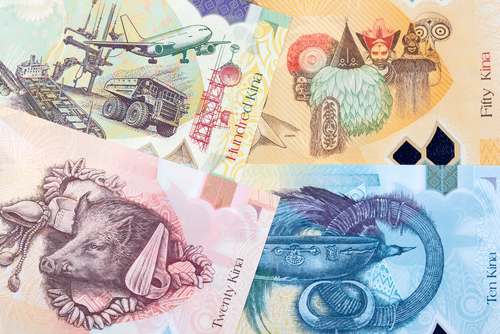The Papua New Guinean Kina (PGK) is the official currency of Papua New Guinea (PNG) and a vital component of the country’s trade, economy, and financial stability. Whether you are planning to invest, travel, or simply interested in learning more about global currencies, understanding the Kina can provide valuable insights.
Here’s everything you need to know about the Papua New Guinean Kina, its history, significance, and how it plays a crucial role in Papua New Guinea’s economic landscape.
What is the Papua New Guinean Kina?
The Kina (PGK) is the official currency of Papua New Guinea and is further divided into 100 smaller units called Toea. Introduced in 1975 when PNG gained independence from Australia, the Kina replaced the Australian Dollar to symbolize the country’s economic autonomy.
The name “Kina” comes from traditional shell money used by local communities, highlighting the cultural significance of trade and value exchange in PNG.
Why is the Kina Important?
1. Core to Papua New Guinea’s Economy
The Kina serves as PNG’s medium of exchange for goods and services, from household necessities to large-scale exports such as liquefied natural gas (LNG), gold, and copper. It plays an essential role in managing trade operations and stabilizing the economic environment.
2. Supports International Trade
PNG’s primary export markets include Australia, China, Japan, and South Korea. The Kina enables these international transactions, making it an essential tool in facilitating global business relationships.
3. Cultural and Historical Significance
Beyond being a currency, the Kina represents PNG’s rich cultural identity. The use of the name “Kina,” derived from shell money, reflects the country’s deep-rooted tradition of valuing tangible, physical commodities as wealth.
Features of the Papua New Guinean Kina
The Kina is not just a functional currency but also carries distinct features that reflect the culture and heritage of PNG. Key highlights include:
- Design Elements: The banknotes and coins showcase indigenous art, regional flora and fauna, and traditional symbolic motifs.
- Security Features: Modern banknotes incorporate advanced security features, such as holograms and micro-texts, to prevent counterfeiting.
- Denominations:
-
- Coins range in value from 5 toea to 2 Kina.
- The banknotes are available in denominations of 2, 5, 10, 20, 50, and 100 Kina.
Exchange Rates and Factors Influencing the Kina
Like all currencies, the value of the Kina fluctuates based on global and local economic dynamics. Key factors influencing its performance include:
- Commodities Market:
PNG is heavily reliant on the export of natural resources like gold, copper, and LNG. Fluctuations in these commodity prices directly impact the strength of the Kina.
- Foreign Investment:
Foreign direct investment (FDI) in key industries like mining and agriculture can prompt significant economic growth, influencing the value of the Kina against other global currencies.
- Geopolitical Factors:
Decisions by trading partners and global organizations, such as the International Monetary Fund (IMF), can impact the stability and strength of the Kina.
- Domestic Economy:
Inflation, employment rates, and government policies also play a key role in determining the purchasing power and exchange rates of the currency.
How to Exchange Papua New Guinean Kina
If you’re planning a trip to PNG or wish to engage in business dealings, here’s how you can exchange or manage Kina efficiently:
1. Currency Exchange Services
- Banks: Many international banks handle major currency exchanges and include PGK in their offerings.
- Exchange Bureaus: You can exchange foreign currencies at authorized bureaus in PNG.
2. Online Transfers
For global transactions, financial platforms like Western Union, MoneyGram, and some digital transfer services allow the safe transmission of Kina online.
3. Tips for Currency Exchange
- Always check exchange rates before trading currencies, as fluctuations occur daily.
- Use reputable services to avoid fraud or hidden fees.
Challenges Facing the Papua New Guinean Kina
While the Kina plays a vital role in PNG’s economy, it also faces several challenges that impact its stability and value:
- Economic Dependence on Commodities:
With a significant portion of its GDP tied to resource exports, the economic standing of the Kina is vulnerable to fluctuations in global commodity prices.
- Limited Usage Outside PNG:
The Kina’s limited recognition outside of PNG can create challenges for international transactions, often leading to the need for intermediary currencies like the USD or AUD.
- Inflationary Pressure:
Inflation remains one of the critical challenges in PNG, periodically decreasing the purchasing power of the Kina for local citizens.
What Makes the Kina Unique?
The Papua New Guinean Kina is not just a tool of commerce but a reflection of Papua New Guinea’s rich cultural heritage and trade traditions. Its unique design elements and connection to shell money give it a symbolic identity unmatched by many other global currencies.
Frequently Asked Questions (FAQs)
What is the exchange rate of the Kina?
The exchange rate of the Kina fluctuates regularly based on international trade, commodity prices, and economic policies. It’s best to check with a reliable source like a bank or money transfer service for the latest rates.
How do I send money to someone in Papua New Guinea using Kina?
There are several platforms like Western Union or specialized payment services that allow secure money transfers in Kina. Always check for fees and exchange rates beforehand.
Is the Kina accepted globally?
The Kina is primarily used within Papua New Guinea and may not be widely recognized outside the country. Travelers and businesses often convert Kinas into popular currencies like USD or AUD for international transactions.
What is the significance of “Toea”?
Toea is a subunit of the Kina, with 100 Toea equaling 1 Kina. Like the term “Kina,” Toea also carries cultural significance as a traditional currency unit.
Are older Kina banknotes still valid?
Banknotes of older series are typically valid as long as they’ve not been officially demonetized by the Bank of Papua New Guinea.
